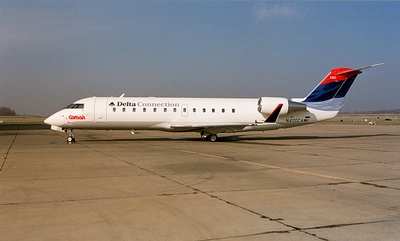Lowest GA Accident Rate In 40 Years Of Record Keeping
 The numbers don't lie. The state of
civil aviation safety continued to improve in 2006, according to
statistics released Tuesday by the National Transportation Safety
Board.
The numbers don't lie. The state of
civil aviation safety continued to improve in 2006, according to
statistics released Tuesday by the National Transportation Safety
Board.
According to the NTSB, the number of accidents in all segments
of civil aviation in 2006 were less than in 2005 -- with general
aviation recording the lowest number of accidents and fatal
accidents in the 40 years of NTSB record keeping.
"This is very good news," said NTSB Chairman Mark V. Rosenker,
"but it is no reason to let down our guard. We need to build on
this improving record with a continued emphasis on safety in all
phases of aviation."
Major air carriers continued to have the lowest accident rates
in civil aviation. These commercial carriers, officially
classified by federal regulations as operating under 14 CFR Part
121, carried 750 million passengers more than 8 billion miles while
logging more than 19 million flight hours in 2006. At the same
time, these carriers had 31 accidents, down more than 20 percent
from 2005. Only two of the 31 accidents were fatal, resulting in 50
fatalities.
Over the years, the number of major air carrier accidents has
increased, primarily due to a substantial increase in flight
activity. The number of flight hours logged by air carriers has
almost doubled since 1987 and the number of departures has
increased by 50 percent. Major air carriers experienced in 2006, on
average, only 1 accident every 266 million miles, 630,000 hours
flown, or 368,000 departures.
Fatal accidents are rare events, occurring only .01 accidents
per 100,000 flight hours or .018 accidents per 100,000
departures.

On-demand Part 135 operations that include air taxi, air tour,
and air medical operations experienced more accidents than major
air carrier operations. These operations typically use much smaller
aircraft, including helicopters, and can service smaller airports.
In 2006, on-demand part 135 operators had 54 accidents, down almost
20 percent from 2005, with 10 of those accidents resulting in 16
fatalities.
These air carriers flew more than 3.6 million flight hours in
2006, and recorded 1.5 accidents and .28 fatal accidents for every
100,000 hours flown. The number of on-demand Part 135 accidents has
been steadily decreasing over the past 10 years, while the hours
flown by these air carriers has steadily increased, producing a
general downward pattern in accident and fatal accident rates.
Commuter operations (officially described as scheduled Part 135
operators) show a similar pattern to on-demand Part 135 air
carriers, but account for a very small proportion of the accidents
and flight activity. In 2006, commuter operators experienced only 3
accidents, one of them fatal, resulting in two fatalities. However,
these operations account for only 1% of air carrier flight hours,
resulting in 1.1 accidents and .36 fatal accidents per 100,000
hours flown. These rates are comparable to on-demand Part 135
operations.

The decline in General Aviation accidents in 2006 continues an
ongoing trend. General Aviation accounted for the greatest number
of civil aviation accidents and fatal accidents in 2006; a total of
1,515 accidents, 303 of them fatal, resulted in 698 fatalities.
Although General Aviation accounts for half of all civil aviation
flight hour activity, it produces the highest accident and fatal
accident rates. Part of the decline in the number of General
Aviation accidents was due to a steady decrease in the amount of
flight activity. Since 1990, General Aviation hours flown has
declined 20 percent, and as a consequence, the General Aviation
accident rate stayed relatively stable in that period, averaging
approximately 7.5 accidents per 100,000 flight hours.
 ANN's Daily Aero-Linx (04.16.24)
ANN's Daily Aero-Linx (04.16.24) Aero-News: Quote of the Day (04.16.24)
Aero-News: Quote of the Day (04.16.24) Airborne 04.10.24: SnF24!, A50 Heritage Reveal, HeliCycle!, Montaer MC-01
Airborne 04.10.24: SnF24!, A50 Heritage Reveal, HeliCycle!, Montaer MC-01 Airborne 04.12.24: SnF24!, G100UL Is Here, Holy Micro, Plane Tags
Airborne 04.12.24: SnF24!, G100UL Is Here, Holy Micro, Plane Tags Airborne-Flight Training 04.17.24: Feds Need Controllers, Spirit Delay, Redbird
Airborne-Flight Training 04.17.24: Feds Need Controllers, Spirit Delay, Redbird





